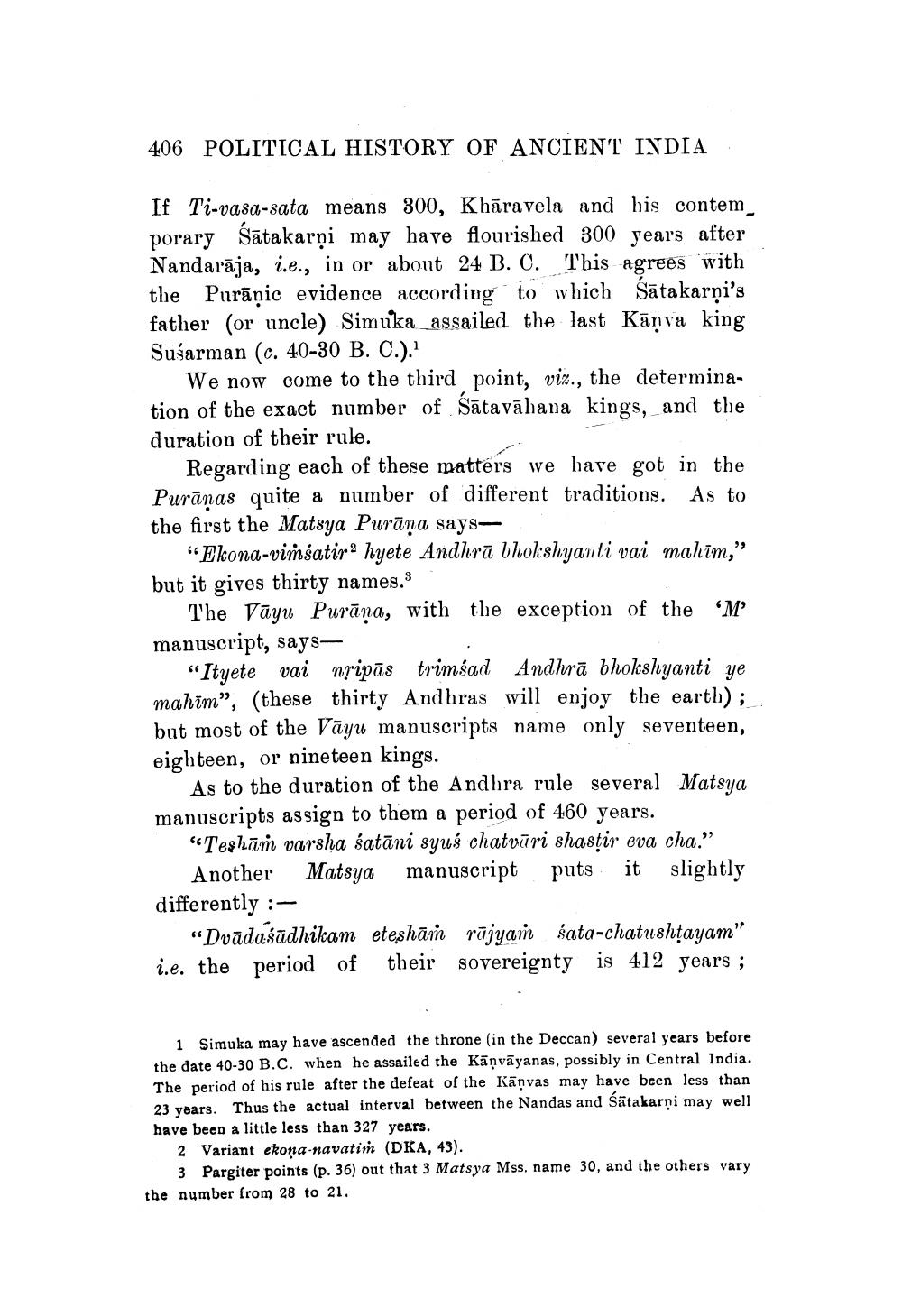________________
406 POLITICAL HISTORY OF ANCIENT INDIA
If Ti-vasa-sata means 300, Kharavela and his contem porary Satakarni may have flourished 300 years after Nandaraja, i.e., in or about 24 B. C. This agrees with the Puranic evidence according to which Satakarni's father (or uncle) Simuka assailed the last Kanva king Susarman (c. 40-30 B. C.).1
We now come to the third point, viz., the determination of the exact number of Satavahana kings, and the duration of their rule.
Regarding each of these matters we have got in the Puranas quite a number of different traditions. As to the first the Matsya Purana says
"Ekona-vimsatir2 hyete Andhra bhokshyanti vai mahim," but it gives thirty names.
The Vayu Purana, with the exception of the 'M' manuscript, says—
"Ityete vai nripas trimsad Andhra bhokshyanti ye mahim", (these thirty Andhras will enjoy the earth); but most of the Vayu manuscripts name only seventeen, eighteen, or nineteen kings.
As to the duration of the Andhra rule several Matsya manuscripts assign to them a period of 460 years.
"Tesham varsha satani syuś chatvari shasṭir eva cha." Another Matsya manuscript puts it slightly differently:
:
"Dvadasadhikam eteshām rājyam sata-chatushṭayam" i.e. the period of their sovereignty is 412 years;
1 Simuka may have ascended the throne (in the Deccan) several years before the date 40-30 B.C. when he assailed the Kaṇvāyanas, possibly in Central India. The period of his rule after the defeat of the Kanvas may have been less than 23 years. Thus the actual interval between the Nandas and Satakarni may well have been a little less than 327 years.
2 Variant ekona-navatim (DKA, 43).
3 Pargiter points (p. 36) out that 3 Matsya Mss. name 30, and the others vary the number from 28 to 21.




